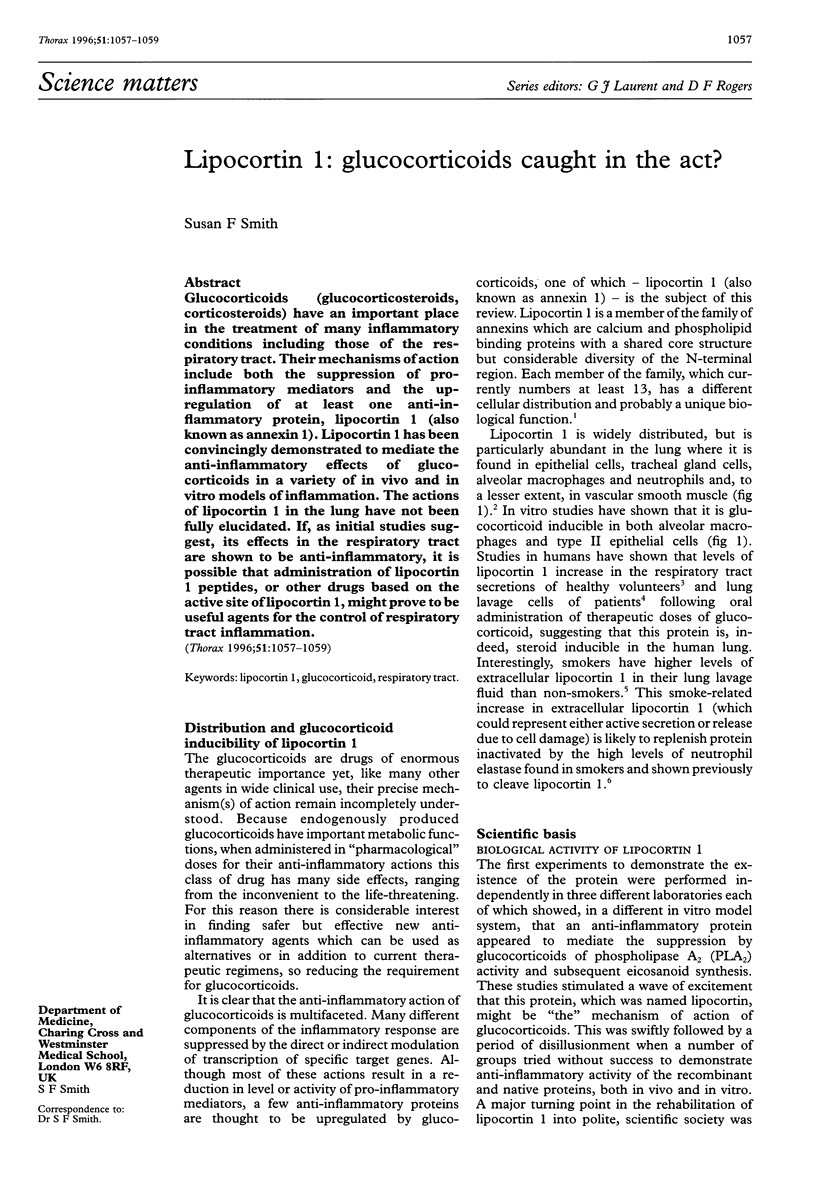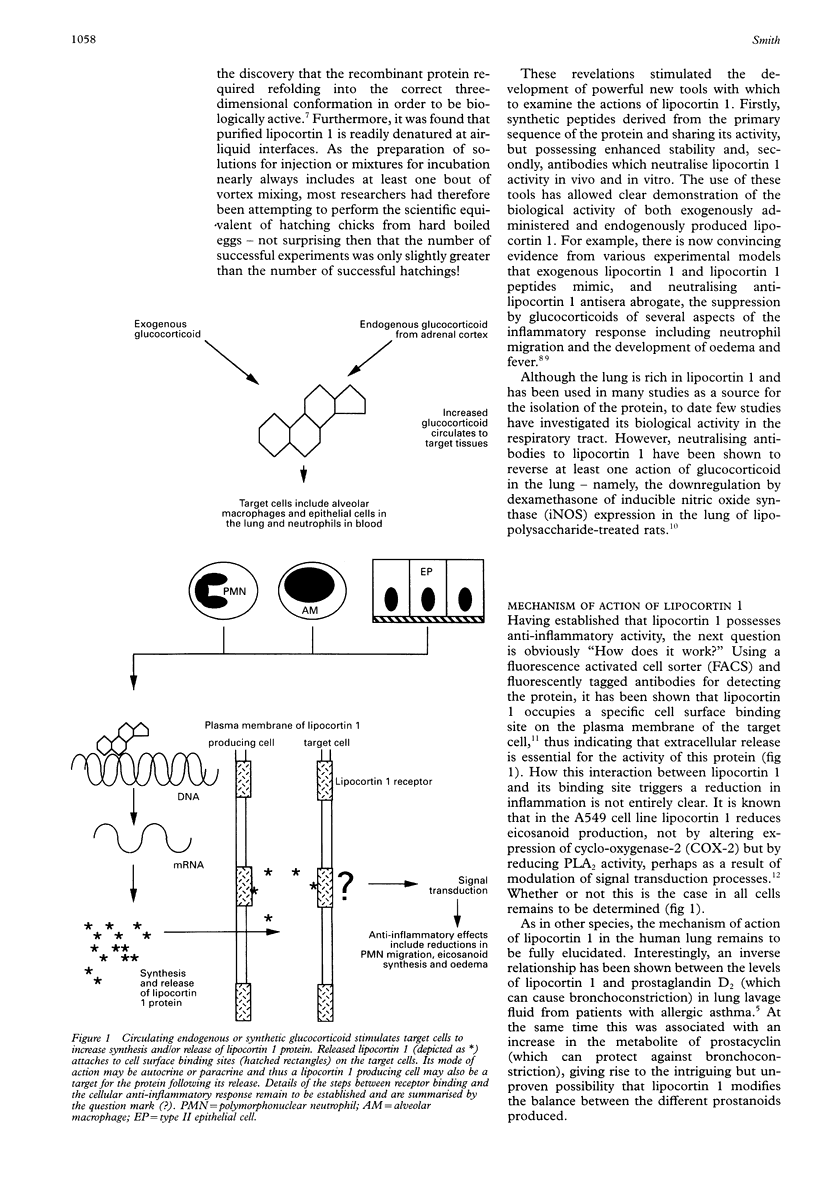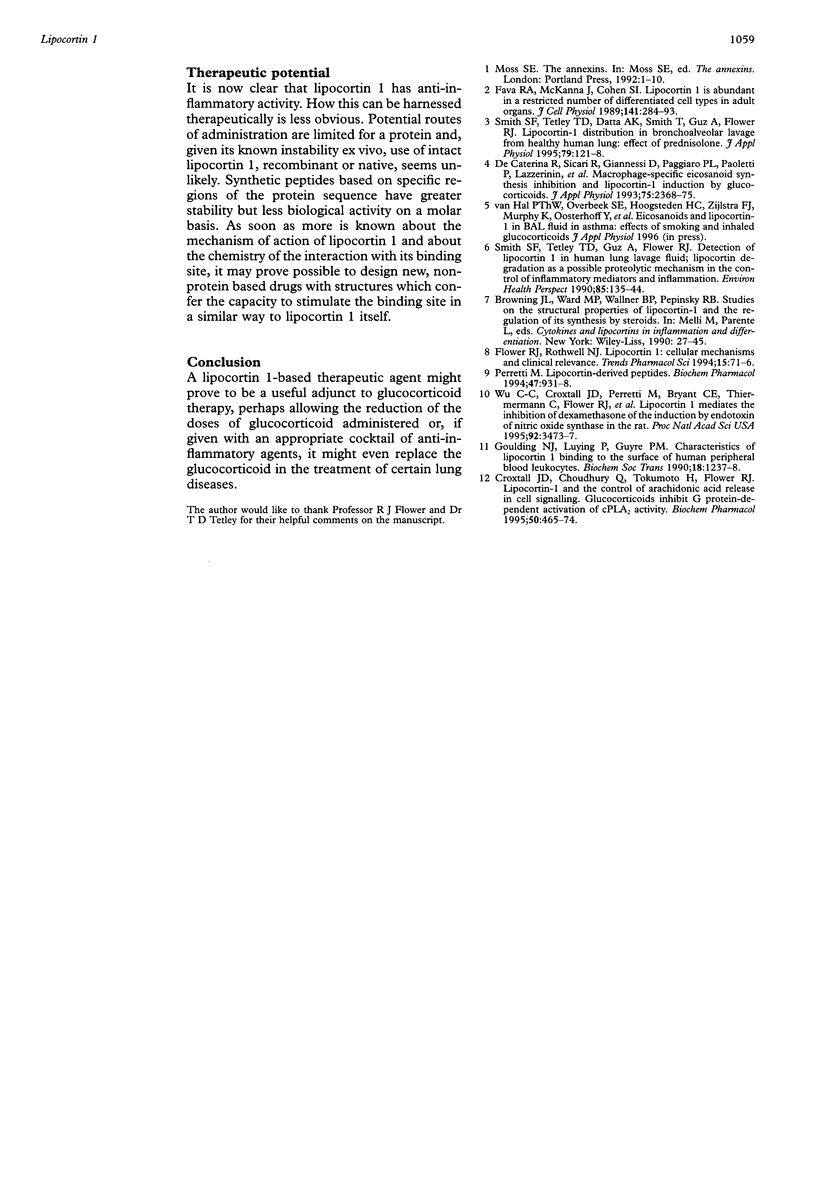Abstract
Glucocorticoids (glucocorticosteroids, corticosteroids) have an important place in the treatment of many inflammatory conditions including those of the respiratory tract. Their mechanisms of action include both the suppression of proinflammatory mediators and the upregulation of at least one anti-inflammatory protein, lipocortin 1 (also known as annexin 1). Lipocortin 1 has been convincingly demonstrated to mediate the anti-inflammatory effects of glucocorticoids in a variety of in vivo and in vitro models of inflammation. The actions of lipocortin 1 in the lung have not been fully elucidated. If, as initial studies suggest, its effects in the respiratory tract are shown to be anti-inflammatory, it is possible that administration of lipocortin 1 peptides, or other drugs based on the active site of lipocortin 1, might prove to be useful agents for the control of respiratory tract inflammation.
Full text
PDF


Selected References
These references are in PubMed. This may not be the complete list of references from this article.
- Browning J. L., Ward M. P., Wallner B. P., Pepinsky R. B. Studies on the structural properties of lipocortin-1 and the regulation of its synthesis by steroids. Prog Clin Biol Res. 1990;349:27–45. [PubMed] [Google Scholar]
- Croxtall J. D., Choudhury Q., Tokumoto H., Flower R. J. Lipocortin-1 and the control of arachidonic acid release in cell signalling. Glucocorticoids (changed from glucorticoids) inhibit G protein-dependent activation of cPLA2 activity. Biochem Pharmacol. 1995 Aug 8;50(4):465–474. doi: 10.1016/0006-2952(95)00156-t. [DOI] [PubMed] [Google Scholar]
- De Caterina R., Sicari R., Giannessi D., Paggiaro P. L., Paoletti P., Lazzerini G., Bernini W., Solito E., Parente L. Macrophage-specific eicosanoid synthesis inhibition and lipocortin-1 induction by glucocorticoids. J Appl Physiol (1985) 1993 Dec;75(6):2368–2375. doi: 10.1152/jappl.1993.75.6.2368. [DOI] [PubMed] [Google Scholar]
- Fava R. A., McKanna J., Cohen S. Lipocortin I (p35) is abundant in a restricted number of differentiated cell types in adult organs. J Cell Physiol. 1989 Nov;141(2):284–293. doi: 10.1002/jcp.1041410209. [DOI] [PubMed] [Google Scholar]
- Flower R. J., Rothwell N. J. Lipocortin-1: cellular mechanisms and clinical relevance. Trends Pharmacol Sci. 1994 Mar;15(3):71–76. doi: 10.1016/0165-6147(94)90281-x. [DOI] [PubMed] [Google Scholar]
- Goulding N. J., Luying P., Guyre P. M. Characteristics of lipocortin 1 binding to the surface of human peripheral blood leucocytes. Biochem Soc Trans. 1990 Dec;18(6):1237–1238. doi: 10.1042/bst0181237. [DOI] [PubMed] [Google Scholar]
- Perretti M. Lipocortin-derived peptides. Biochem Pharmacol. 1994 Mar 15;47(6):931–938. doi: 10.1016/0006-2952(94)90402-2. [DOI] [PubMed] [Google Scholar]
- Smith S. F., Tetley T. D., Datta A. K., Smith T., Guz A., Flower R. J. Lipocortin-1 distribution in bronchoalveolar lavage from healthy human lung: effect of prednisolone. J Appl Physiol (1985) 1995 Jul;79(1):121–128. doi: 10.1152/jappl.1995.79.1.121. [DOI] [PubMed] [Google Scholar]
- Smith S. F., Tetley T. D., Guz A., Flower R. J. Detection of lipocortin 1 in human lung lavage fluid: lipocortin degradation as a possible proteolytic mechanism in the control of inflammatory mediators and inflammation. Environ Health Perspect. 1990 Apr;85:135–144. doi: 10.1289/ehp.85-1568329. [DOI] [PMC free article] [PubMed] [Google Scholar]
- Wu C. C., Croxtall J. D., Perretti M., Bryant C. E., Thiemermann C., Flower R. J., Vane J. R. Lipocortin 1 mediates the inhibition by dexamethasone of the induction by endotoxin of nitric oxide synthase in the rat. Proc Natl Acad Sci U S A. 1995 Apr 11;92(8):3473–3477. doi: 10.1073/pnas.92.8.3473. [DOI] [PMC free article] [PubMed] [Google Scholar]


